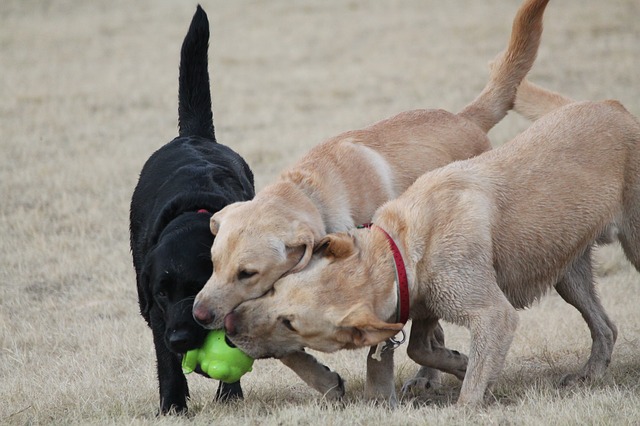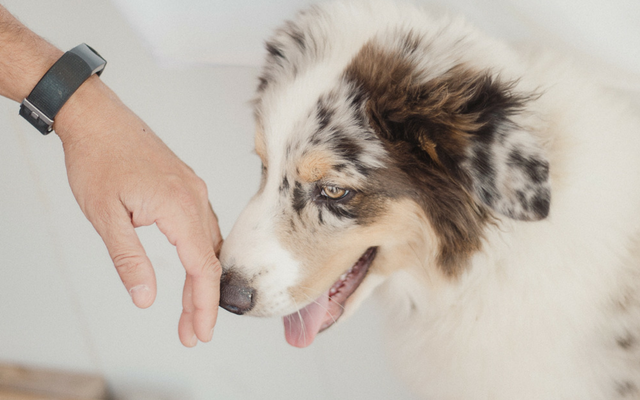
Dog fears seem to be on the rise.
I blame everything on social media and people’s sheer lack of time to spend with their dog.
15 years ago, it was rare to see an adult dog that had never been walked or even been on a leash.
Now, I see these dogs EVERY DAY.
The dog spends his puppyhood in a home or a backyard without any socialization.
No wonder these dogs grow up afraid of everything in their environment.
15 years ago, I would have called this abuse.
Today, with as rampant as the phenomenon is, I am more likely to call it neglect.
However, it becomes difficult to socialize these dogs without making it feel like abuse.
Ironically, one of my best friends contacted me yesterday because she has adopted a dog that would rather spend 24 hours in his crate than come out at all. This is sad for the human and the dog.
Thankfully, she was doing the right thing by closing the door to the crate so he couldn’t hide, and forcing the dog to deal with some of his fears.
However, this is a very fine line and very difficult for most people to ride.
I run into people who either want to:
Let the dog live like a recluse the rest of his life because they don’t want him to be scared
or
Force the dog into every terrifying social situation because they think he will learn to deal.
Neither of these will work.
If you allow the dog to live like a recluse, he will never adapt and learn social and coping skills.
If you force him into every situation that scares him, you will ruin the trust between you and you will either end up with a nonfunctional blob of a dog or an aggressive dog.
It is about finding the right recipe for success.
And, I will say it looks a little different for each dog, so, know your dog!
Here Are 7 Ways to Teach Your Dog to Face His Fears
1. Positive Reinforcement
Correcting dogs that suffer from fear issues will only make them worse.
When you put a dog into “fight or flight” he has two choices: Fight (aggression) or Flight (run away and feel worse).
The best way to go about working with a dog like this is using the things that he needs for life.
Yes, he may be too scared to take treats at first.
But, the truth is that he needs food to exist.
If you aren’t feeding him out of a bowl, but instead you are using his food to reinforce good and social behavior the dog will flourish faster.
If you feed me at the buffet, and then offer me a chocolate cake to get over my arachnophobia, I am going to laugh in your face. No thank you, sir!
If, however, I am famished, and you offer to take me for food if I just look at a picture of a spider in a book (the first step), I am likely to agree.
Work your way through the more difficult things.
But reward good behaviors.
Reward “sits,” “downs,” attention, and any other behaviors you want your dog to show.
Let’s face it, your dog does excellent stuff all the time, so why not use his food, or great treats (like dehydrated liver), to reinforce these behaviors?
Ironically, rewarding behaviors the dog already shows is better than “luring”, anyway.
So, your dog will have a stronger training background!
This will also build your relationship in a positive way!
2. Push, But Don’t Push
You can’t let your dog live in his crate for the rest of his life! That is no life!!

My mom adopted a Pitbull that was so scared, she lived in my mom’s closet.
She thought it was best not to force the dog, however, after several months the dog’s behavior actually got worse.
At first, she would venture out occasionally to visit, but eventually she would stay in that closet from sunup to sundown, and at the very end, she would try to attack anyone who tried to make her move.
It is easier to do little pushes in the beginning.
Push them, expect them to make tiny changes, but don’t traumatize them.
Shutting the closet door, or putting the dog on leash so she could lay at her feet would have been best.
Taking her to Walmart to socialize would have been waaaaay too much!
Get the idea?
3. Build Trust
Trust is built.
Do you trust everyone you meet, right away?
I don’t!
I used to be more trusting, or as my brother says “naïve” but with life, comes life lessons.
Trust is built, especially for someone or something that feels a little broken.
Do whatever you can to build trust and not break it!
For instance, I used to have a puppy that was terrified of people he didn’t know.
I tried getting people to give this puppy treats so that he would associate people with good things.
Inevitably, the same people would want to pet him (he was incredibly cute), and I had a hard time telling them “NO” after they had just done me a favor.
By allowing people to do something he didn’t want, I was breaking our trusting relationship.
I remember one time holding his tail so a small toddler could touch it. He was undoubtedly filled with terror, and I was thinking the toddler wasn’t going to hurt him. It was a poor decision on my part!
He learned that hackling, growling and snapping would keep these people at bay, and I wasn’t helping the situation.
As soon as I learned to stop people from EVER touching him, he learned to trust ME!!
Just because someone gave him a treat or talked to him, didn’t mean they would touch him.
It was after that, when he learned to trust me.
Don’t push him so hard your dog loses his trust in you.
Without you, he only has himself and his teeth!
Take care of him first!
Who cares if you make someone mad?!
4. Teach Him Calming Mechanisms
I work with a lot of dogs with fear issues!
I like to teach them to calm themselves.
In humans, we call this “biofeedback”; imagining we are somewhere else and learning to control our heart rate and our blood pressure.
Dogs can’t be taught the same, but they can benefit from some of the same techniques if you take the time to do it!
Teach your dog to relax himself with your touch and some massage.

I always find it ironic when people balk at the 20 minutes a day it takes to teach your dog this technique.
20 minutes is less than one sitcom.
20 minutes is probably much less than some of you spend on social media or watching TV.
Give your dog the time he needs, especially if you have taken on a dog that has fear issues!
5. Teach Him Coping Skills
Teach him coping skills!
We all need them!
I HATE bridges!
Ironically, I am pet sitting for a friend over a huge bridge as I write this. We are supposed to get a lot of snow, and so I begged my friend to take my shift. Ha ha.
My usual coping mechanism is to just pick a point on the road in front of me and watch that while not glancing at the cars around me or the water.
I know it sounds ridiculous, but we all have fears, and ways to cope.
When I am in a social situation that is difficult for me, I play music in my brain to deal with the stress and relax me, or I find the pet in the house and spend time with him.
You need to teach your dog to have coping mechanisms because his brain doesn’t work like ours.
He can’t come up with his own!
I have a Malinois that is a little terrified of everything.
If he belonged to someone else, he would show aggressive tendencies to keep his “fears” and people at bay, but I have taught him “coping mechanisms” through obedience.
You see, he has to have good obedience skills.
Then, when something scary happens, I can ask him to perform and, instead of getting worked up, his mind says “I CAN DO THAT”. This way, he can be successful in those situations.
Without excellent obedience, he would be forced to deal with things on his own; and that wouldn’t end well for anyone!
So, work on your obedience! It will help to relax your dog!

The puppy I used in the earlier example had lots of coping skills and obedience.
When he would see something that scared him, I would get him to perform a multitude of obedience commands and fun tricks to keep his mind off the fear: Sit, Down, Touch, Spin, High Five, Watch, Roll Over… the sky was the limit.
I have taught my current dog eye contact and focus.
By looking at me, he can let go of the things that scare him in his environment, and he will be rewarded.
It also has a calming effect on him.
I realized this one day when I was out for a jog.
He was jogging about 3 feet in front of me (but not pulling, of course) and we saw a man running with a double stroller.
I guess the whole look of that situation scared him because immediately he put HIMSELF in heel position and looked up at me with extreme focus.
It was as if he was telling me, “Hey mom, I am scared of that, I don’t know what it is… so can I just look up at you until it is gone? Thanks!”
I recognized what he was doing, slowed down, and rewarded him heftily for such a good decision.
I realized by teaching him that behavior for so long, he had formed his own coping mechanism for stress! It was a miracle moment!
You can do the same with your dog if you are rewarding and consistent with your obedience!
Let’s agree: this was more acceptable than lunging and growling at the man with the toddlers; instead, he looked like a superbly trained dog, and no one else would even suspect fear as the driving factor.
6. Keep Him Calm in the Interim
There are lots of supplements and natural pills that can help him be calm in the interim of stress!
Many of these have been researched and can just help your dog feel calmer about his environment.
7. Talk to Your Vet
If your dog’s fear is extreme; talk to your vet.
Your vet can prescribe medications that will help your dog relax.
I never understand when people are so adamant that they use no drugs on their dogs; while most humans have been on some medication in their life.
I have certainly needed antidepressants.
I even went through a period, after a death, where I needed anti-anxiety medication because I had panic attacks.
I didn’t have control over my body’s response.
The medication helped me to get more in tune with my brain and come up with a better solution.
If your dog needs them, why not use them?!
Now, I will note that medication without this behavior modification will likely not help.
But, medication, along with behavior modification, can be a godsend to those who are struggling, both canine and human partner!
Follow these tips, and you will be on the road to a confident dog in no time!

via
Whisker Therapy





































